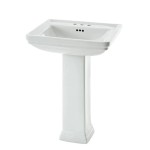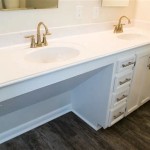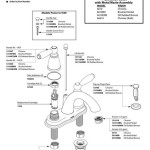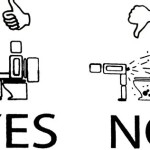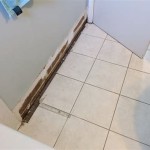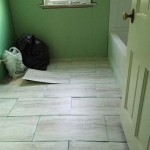30 Inch Unfinished Bathroom Vanity Base Cabinets: A Comprehensive Guide
The selection of bathroom fixtures is a crucial aspect of any renovation or new construction project. Bathroom vanities, in particular, serve as focal points while providing essential storage and functionality. Among the various options available, 30-inch unfinished bathroom vanity base cabinets offer a versatile and customizable solution for homeowners and contractors alike.
An unfinished vanity base cabinet, as the name suggests, is a cabinet that has not been stained, painted, or otherwise finished. This allows for complete customization of the final appearance, enabling a perfect match with the existing bathroom décor or a unique, personalized design. The 30-inch size provides a practical compromise, large enough for adequate storage while remaining suitable for smaller bathrooms where space is limited. This article explores the advantages, considerations, and best practices associated with selecting and utilizing 30-inch unfinished bathroom vanity base cabinets.
Advantages of Choosing Unfinished Vanity Cabinets
Unfinished vanity cabinets offer a range of benefits compared to pre-finished alternatives, primarily centered around customization, cost-effectiveness, and control over the finishing process. These advantages are particularly appealing to individuals with specific design preferences or budget constraints.
One of the most significant benefits is the
customization potential
. With an unfinished cabinet, the buyer has complete control over the stain, paint, and sealant used. This allows for an exact color match to existing bathroom elements, such as tile, flooring, or wall paint. Furthermore, specialized finishes, such as distressing, antiquing, or glazing, can be applied to achieve a unique aesthetic. The ability to select a specific topcoat ensures the cabinet's durability and resistance to moisture, a crucial factor in a bathroom environment.Another considerable advantage is the
potential for cost savings
. Unfinished cabinets typically cost less than their pre-finished counterparts. This is because the manufacturer avoids the labor and material costs associated with the finishing process. For budget-conscious homeowners, the savings can be substantial, especially when multiple vanities are required for a larger project. However, it is important to factor in the cost of finishing materials (stain, paint, sealant, brushes, etc.) and the labor involved, whether the finishing is done DIY or by a professional.Finally, unfinished cabinets offer
greater control over the finishing process
. This includes the ability to use environmentally friendly or low-VOC (volatile organic compound) products, which can be a significant concern for individuals with allergies or sensitivities. Also, the buyer can personally inspect and ensure the quality of the finish, avoiding potential issues like uneven application, blemishes, or inadequate sealant coverage often found in mass-produced pre-finished cabinets.Key Considerations When Selecting a 30 Inch Unfinished Vanity Cabinet
Choosing the right unfinished vanity base cabinet involves several considerations beyond just the dimensions. Material quality, construction methods, and design features all contribute to the cabinet's overall durability and aesthetic appeal. Careful evaluation is essential to ensure a satisfactory long-term investment.
Material Quality:
The type of wood used in construction significantly impacts the cabinet's strength, stability, and resistance to moisture. Solid hardwood options, such as maple, oak, or birch, are generally considered the most durable and long-lasting. They are less prone to warping or cracking due to humidity fluctuations. However, solid wood can be more expensive. Alternatively, plywood or MDF (medium-density fiberboard) are commonly used for cabinet components, especially for sides and backs. These materials are more affordable and dimensionally stable but may be less resistant to moisture damage. When choosing plywood or MDF, it's important to select a high-quality grade that is specifically designed for bathroom use and features a water-resistant core.Construction Methods:
The way the cabinet is assembled directly affects its structural integrity and longevity. Look for cabinets with solid joinery techniques, such as dovetail drawers, mortise-and-tenon joints, or strong screws and adhesives. Avoid cabinets that are simply stapled or glued together, as these are likely to fail under stress. Examine the drawer slides and hinges; opt for high-quality, soft-close hardware to ensure smooth and quiet operation. Full extension drawer slides provide complete access to the drawer's contents, which can be particularly useful in a bathroom setting.Design Features:
Beyond the basic cabinet box, consider the design elements that will enhance the vanity's functionality and aesthetics. The number and configuration of drawers and shelves should be appropriate for the intended storage needs. Adjustable shelves offer flexibility for accommodating items of different sizes. Consider whether the cabinet features a recessed toe kick, which allows for comfortable standing while using the vanity. The style of the cabinet doors and drawer fronts (e.g., raised panel, shaker, slab) should complement the overall bathroom design. Finally, evaluate the ease of access to plumbing connections and ensure that the cabinet can accommodate the selected sink and faucet.Finishing Techniques and Best Practices
The finishing process is crucial for protecting the unfinished vanity cabinet and achieving the desired aesthetic. Proper preparation, application, and sealing are essential for a durable and visually appealing result. Several techniques and best practices can ensure a successful finishing project.
Surface Preparation:
Before applying any finish, the cabinet surface must be thoroughly prepared. Start by sanding the wood with progressively finer grits of sandpaper (e.g., 120-grit, 180-grit, 220-grit) to create a smooth and even surface. Remove any dust or debris with a tack cloth or vacuum cleaner. Fill any nail holes or imperfections with wood filler and sand smooth once dry. For cabinets made of MDF or plywood, a primer is highly recommended to seal the surface and provide a better base for the finish coat.Staining/Painting:
The choice between staining and painting depends on the desired aesthetic and the type of wood used. Staining enhances the natural grain of the wood, while painting provides a solid color finish. When staining, apply the stain evenly with a brush or rag, following the manufacturer's instructions. Allow the stain to penetrate for the recommended time and then wipe off any excess. Apply multiple coats of stain for a richer color. When painting, apply a primer first to seal the wood and improve adhesion. Then, apply two or more coats of paint, allowing each coat to dry completely before applying the next. Lightly sand between coats for a smoother finish.Sealing:
Sealing is the final and most crucial step in the finishing process. A sealant protects the wood from moisture, scratches, and stains. Choose a sealant that is specifically designed for bathroom use and provides a durable, water-resistant finish. Polyurethane is a popular choice for its durability and resistance to water. Apply several coats of sealant, following the manufacturer's instructions. Lightly sand between coats for a smoother finish. Allow the sealant to cure completely before installing the vanity top and sink.Furthermore, adequate ventilation is essential during the entire finishing process. Working in a well-ventilated area minimizes exposure to harmful fumes from stains, paints, and sealants. Wearing appropriate personal protective equipment (PPE), such as a respirator, gloves, and eye protection, is also crucial for safety. By following these techniques and best practices, it is possible to achieve a professional-quality finish that will protect and enhance the beauty of the 30-inch unfinished bathroom vanity base cabinet for years to come.

Project Source Unfinished 30 In Natural Rustic Oak Bathroom Vanity Base Cabinet Without Top The Vanities Tops Department At Com

Vanity Base 30 Jamestown Unfinished Kitchen Cabinet Right Drawers Seconds Surplus

Project Source Unfinished 30 In Natural Rustic Oak Bathroom Vanity Base Cabinet Without Top The Vanities Tops Department At Com

Glacier Bay Hampton 30 In W X 21 D 33 5 H Bath Vanity Cabinet Without Top Natural Hickory Hnhk30d The Home Depot

Project Source Unfinished 30 In Natural Rustic Oak Bathroom Vanity Base Cabinet Without Top The Vanities Tops Department At Com

Hampton Bay Easthaven Assembled 30x34 5x24 In Frameless Sink Base Cabinet With False Drawer Front Unfinished Beech Eh3035s Gb The Home Depot

Narrow Red Oak Vanity For Vessel Sink Unfinished Bathroom

Base Cabinet In Unfinished Oak

Narrow Red Oak Vanity For Vessel Sink Unfinished Bathroom

Township Rift Oak 30 Vanity Sink Base Cabinet Drawers On Right
Related Posts

